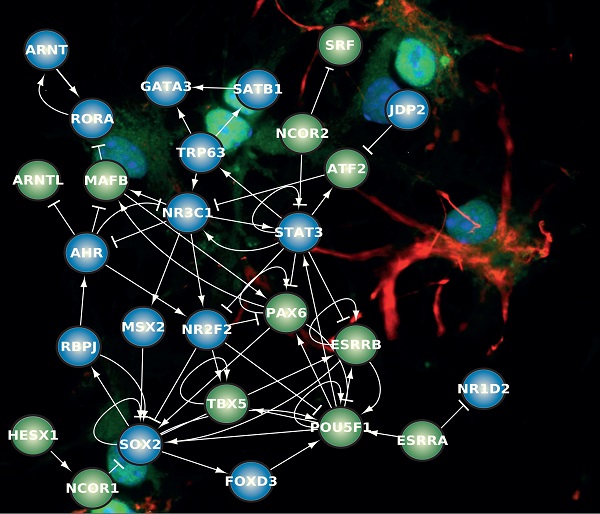
Stem cells generate different types of cell – that much is known; but what factors decide which way a stem cell will differentiate? This is one of the key questions that researchers led by Professor Antonio del Sol, head of the Computational Biology group of the Luxembourg Centre for Systems Biomedicine (LCSB) at the University of Luxembourg, are pursuing.
Rather than looking to a petri dish for answers, they are looking to a computer: In a new study, the researchers present a computational method for identifying “cell fate determinants” on the computer. This allows for more targeted planning of subsequent experiments in stem cell research.
By understanding how stem cells develop, medical professionals hope to learn how to use such cells to treat and even cure certain diseases – for example regenerating damaged tissue or organs by introducing stem cells. The researchers present their current results in the journal “Stem Cell Reports” (DOI:10.1016/j.stemcr.2016.07.014).
The development and state of a cell are determined mainly by gene activity. Often, many different genes are linked together into complex networks, including subnetworks, called network motifs. One such well-understood gene regulation subnetwork, is the so called toggle switch: the ratio of two gene products in a cell decides how the cell will develop. If the ratio of the products is balanced, then the cell remains undifferentiated. If instead the balance shifts in favour of one or the other product, then the cell develops one way or another. “We are trying to identify such cell fate determinants and the corresponding regulatory networks on the computer,” del Sol explained “This is more efficient than experimental research and can provide mechanistic insights into cell differentiation.”
For their computational approach, the researchers only need to know the levels of gene products of all genes that are active in the cells under investigation, that is in the stem cells and in the cells that will potentially arise from them. Further, the method employs information on experimentally validated interactions between genes, which is available in databases. The researchers feed this data into their computer model and link them together using an algorithm. Then, by comparing the resulting networks, they identify the factors involved in differentiation. “This is a rational approach that will ultimately tell us how the cells’ development can be externally steered in a given direction.”
The researchers first confirmed that their computational model works by comparing its predictions against experimental results from five known stem cell models. Their model identified precisely those factors that have been confirmed as cell fate determinants. Next, within an interdisciplinary collaboration at the LCSB, they did the reverse, working from neural stem cells: Del Sol and his team predicted cell fate determinants on the computer. Subsequently, scientists working with Professor Jens Schwamborn, head of the Developmental and Cellular Biology Group, tested whether the cells behaved as expected in an experimental setting – with success: The model precisely identified the factors that induced neural stem cells to mature into either neurons or into astrocytes – two cell types of the central nervous system.
“Our computer model can serve as a guidance to experimental researchers, say in the field of regenerative medicine, in designing novel strategies for directing stem cell differentiation,” del Sol asserted.
A research project is already underway, for example, as a collaboration between Luxembourg researchers and scientists from the University of Lund. This workgroup, led by Professor Malin Parmar, is aiming at differentiating stem cells into specific neurons that are destroyed in the course of Parkinson’s disease. “From our computations,” del Sol continued, “we tell the researchers which cellular factors to manipulate experimentally. This can increase the efficiency of differentiation experiments.” The quality of predictions should continue to improve as more and better data become available to work from, del Sol is convinced. “Our method is ready for it.”
Photo copyright University of Luxembourg: New computational methods to analyse molecular networks (foreground) responsible for cellular differentiation (background).








